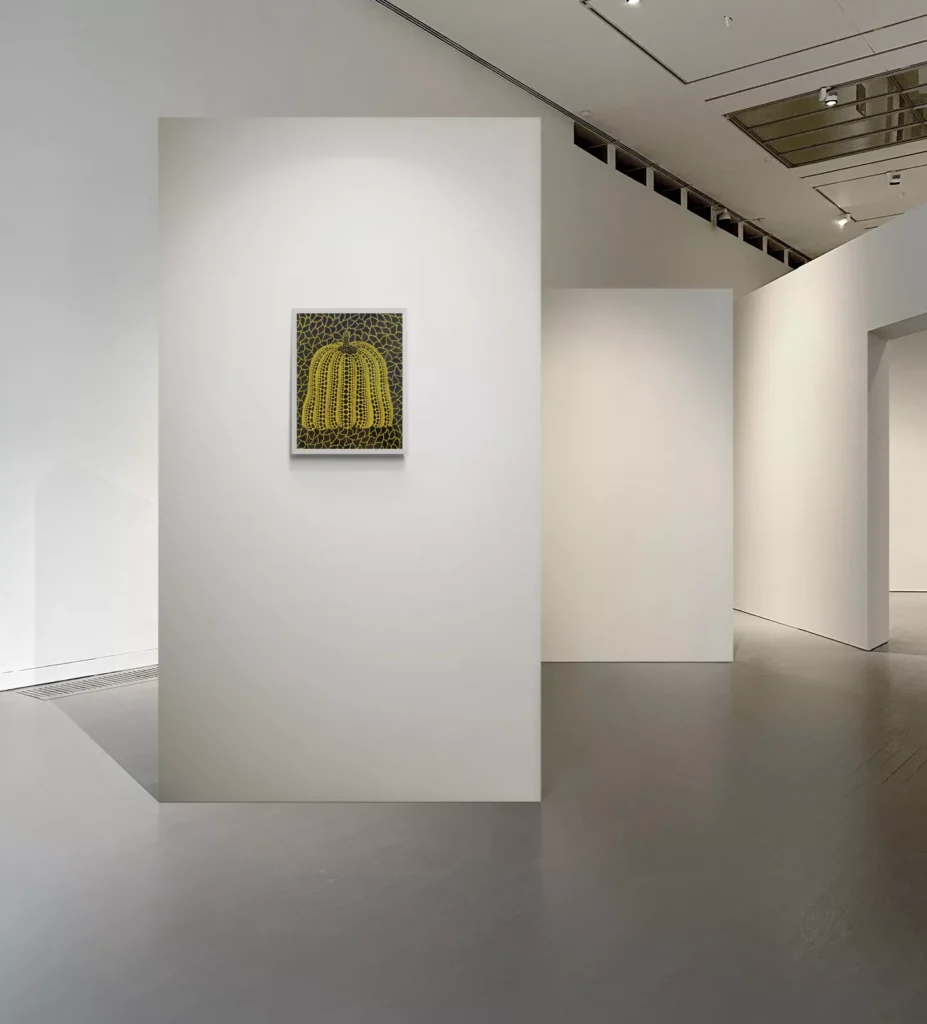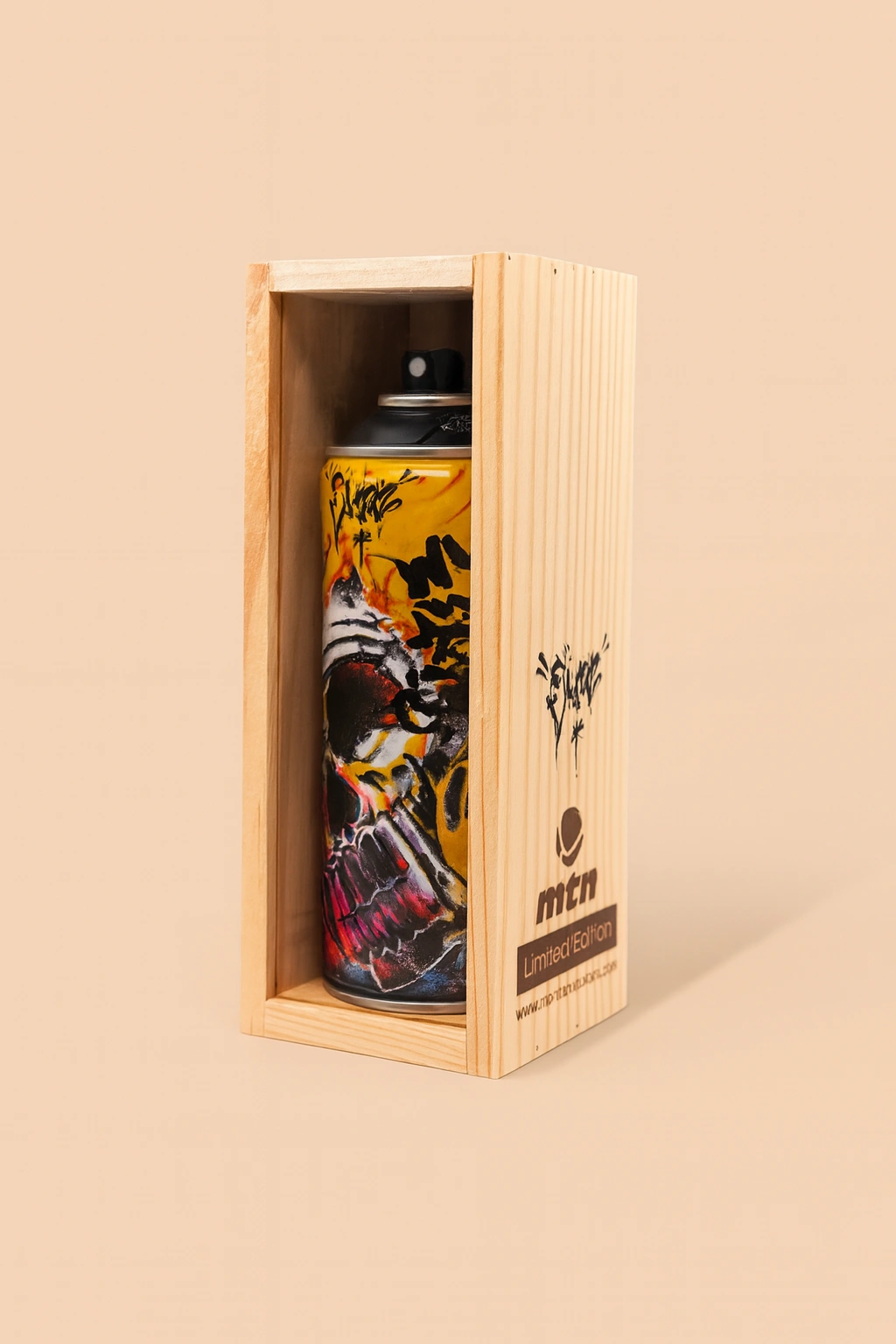Pumpkin (1990), one of Kusama’s most delicate acrylic works, resists spectacle. Its modest size, barely larger than a hand, makes proximity essential. You move closer, and the stillness folds around you. The painting doesn’t demand attention—it absorbs it.
This is not one of Kusama’s mirrored rooms or colossal sculptures. It’s something smaller, more private: a work painted at a time when her practice had turned inward, defined by daily repetition rather than public performance. Its quiet is deliberate.
recollection
The pumpkin, for Kusama, carries memory. Long before it became a motif, it was a childhood companion. Growing up in Matsumoto, surrounded by her family’s seed farm, she drew the vegetables she saw—curved, uneven, dotted. The pumpkin’s steady rhythm comforted her amid early issues and anxieties. Decades later, that familiarity remains, distilled into form.
In Pumpkin (1990), the object is pared down almost to symbol. The ridges are softened, the dots arranged in symmetrical order, each mark purposeful. The background’s fractured web recalls soil, or perhaps skin under magnification—a reminder of the organic beneath the pattern. Kusama transforms what she once feared into a structure of calm.
control
By 1990, Kusama’s language was entirely her own. Dots, nets, repetition—each a record of her way of viewing. The painting belongs to a err when she had returned to Japan after years in New York and had committed herself to a psychiatric hospital. The daily act of painting became her form of stability.
In this small canvas, that discipline is visible in every stroke. The dots vary minutely, their irregularity revealing the human pace beneath the mechanical surface. Acrylic dries fast; there’s no room for hesitation. Yet the painting feels unhurried. Kusama’s control is neither rigid nor cold—it’s rhythmic, steady, like measured breathing.
The black-on-yellow palette recalls her best-known pumpkins from later installations but with more restraint. The contrast here is subdued, almost meditative. The dots don’t compete for dominance; they settle into balance, as if the act of painting has quieted the artist’s own sense of repetition.
small
In Akunst’s exhibition, the curatorial decision to isolate the painting heightens this encounter. The emptiness around it amplifies its weight. A single small object becomes the center of the room, its yellow surface breathing against the white. The contrast between simplicity and intensity evokes something familiar in Kusama’s sensibility: restraint carrying excess just beneath the surface.
flow
Kusama’s process often blurs the line between compulsion and devotion. Repetition, for her, is not decoration—it’s a structure that keeps chaos at bay. The 1990 Pumpkin embodies that tension uniquely: precision coexisting with tremor, order born from instability.
Every dot feels like an individual event; each one repeats without quite matching the others. The imperfections matter—they humanize the rhythm. Rather than self-erasure, the pattern reads as self-regulation, a ritualized form of steadiness.
The painting’s surface absorbs light rather than reflects it, which lends it an inward pull. Unlike her mirrored installations, which scatter perception outward, this work turns attention inward. It invites concentration, even empathy.
journey
That Akunst Gallery lists both Seoul and Toronto as exhibition sites feels fitting. Kusama’s pumpkins move easily between cultures; their language requires no translation. In Seoul, the visual rhythm connects naturally to local traditions of craft and repetition. In Toronto, it resonates with modernist minimal and conceptual art. The painting occupies both spheres effortlessly, unbound by geography.
Its circulation between cities mirrors Kusama’s own trajectory: from provincial Japan to post-war New York, then back again to Tokyo. Her art has always lived in motion, bridging worlds without fully belonging to any. Displayed across continents, the small painting retains the intimacy of its making while reflecting the scale of its reception.
slow
What lingers about Pumpkin (1990) is not its imagery but its temperature. There’s warmth in its yellows, but not brightness; regularity in its pattern, but not perfection. The painting gives the impression of patience—of hours distilled into calm.
It suggests an artist who has learned to coexist with her obsessions rather than escape them. The dots are less about infinity than about endurance, a rhythm that holds the day together. Within its boundaries, repetition becomes a kind of empathy: the act of painting as the act of listening to oneself.
No comments yet.








